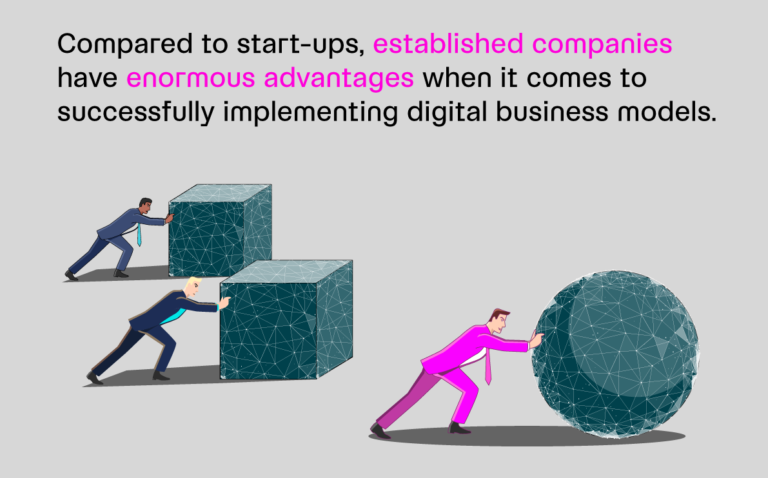Software-as-a-Service – Why SMEs should also rely on it?
Since Salesforce invented the term “Software-as-a-Service” more than twenty years ago, the industry has been characterised by enormous growth and increasing differentiation. There is now a plethora of powerful enterprise software that is no longer run in-house by the company. This development is also confirmed by Cisco’s annual Internet Report. The study shows that 75 percent of all cloud workloads will be in the form of SaaS by 2022. Even if German SMEs are currently still reluctant to digitalise their own business models, there are good reasons why this should change soon.
What exactly is SaaS?
SaaS or Software-as-a-Service – this is a software delivery model that allows users to access the software from any device via the internet. This allows for more flexibility as employees do not need to come into the office to use the software locally. This is because, unlike a traditional setup where software is stored locally, SaaS is hosted in the cloud. This way, the company outsources all the responsibilities associated with maintenance, such as upgrades and troubleshooting. All updates and other maintenance work are carried out automatically by the service provider.
At the same time, SaaS solutions can avoid high set-up costs associated with the one-time purchase and ownership of software or hardware. With SaaS, users pay only a monthly or annual subscription fee that covers licences, maintenance, support and other charges. SaaS is therefore an ideal solution for all companies that are looking for a way to outsource their maintenance and expenses around IT and for whom cost transparency is important.
From user to operator – adding a digital element to the classic business model
SaaS offers different options to extend traditional business models with a digital model. Initially, companies used SaaS solutions to digitalise their processes. Especially Salesforce Automation, Customer Relationship Management (CRM) System or Content Management System (CMS) for communication were implemented as SaaS solutions.
Today, however, entrepreneurs are no longer simply users of SaaS solutions. Some pioneering companies rely on the development of their own SaaS solutions to build industry solutions for the digitalisation of their business model. These include platforms, Internet of Things (IoT) solutions or Big Data analytics software.
The implementation of digital business models helps SMEs to adapt and follow the principle of continuous development. Therefore, building an individual SaaS product is a worthwhile investment. Although the development initially involves a substantial outlay, since the model is scalable through the SaaS approach, the growth opportunities are enormous. The costs therefore pay off in the long term. But how do you find the right SaaS model for your own company to expand your business model?
Learning from the best: Successful SaaS industry solutions
All successful SaaS products have one thing in common: the customer’s wishes are always the focus. After all, customer satisfaction is the most important success factor for a SaaS product – the goal is always to improve the so-called customer journey. It is therefore advisable to think thoroughly about the challenges of one’s customers in order to be able to develop tailor-made solutions. An analysis of competitors provides further insights and it becomes clear where potential business opportunities could lie. Following this analysis phase, the insights gathered should be translated into a business plan that is as concrete as possible.
The long-established steel company Klöckner has already successfully followed this path. For example, the classic business model of steel trading was expanded in 2014 to include a successful online platform. The platform is developing into an industry solution on which various suppliers in the industry now offer their products – the Amazon of the steel trade, so to speak. The model works: already today, Klöckner & Co. makes 35 per cent of its sales digitally, and by 2022 this figure is set to rise to 60 per cent.
Summary:
Instead of looking enviously at other industries that are improving their growth with the help of SaaS technology, SMEs should be brave and actively learn from it. Because when it comes to customer loyalty and success, it is hard to deny that SaaS providers have managed this very well so far. It is worth taking this step, because the benefits of flexibility, seamless updates and cost savings pay off over the initial invest and restructuring of the business model.




